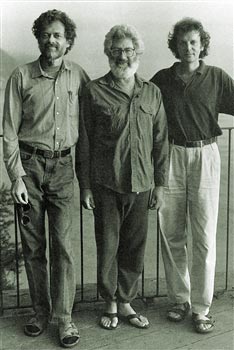The Library of Consciousness
of Consciousness
Lucifer and Ahriman (1919)
A Landscape of Consciousness
Diverse explanations or theories of consciousness are arrayed on a roughly physicalist-to-nonphysicalist landscape of essences and mechanisms. Categories: Materialism Theories (philosophical, neurobiological, electromagnetic field, computational and informational, homeostatic and affective, embodied and enactive, relational, representational, language, phylogenetic evolution); Non-Reductive Physicalism; Quantum Theories; Integrated Information Theory; Panpsychisms; Monisms; Dualisms; Idealisms; Anomalous and Altered States Theories; Challenge Theories. There are many subcategories, especially for Materialism Theories. Each explanation is self-described by its adherents, critique is minimal and only for clarification, and there is no attempt to adjudicate among theories. The implications of consciousness explanations or theories are assessed with respect to four questions: meaning/purpose/value (if any); AI consciousness; virtual immortality; and survival beyond death. A Landscape of Consciousness, I suggest, offers perspective.
Landscape, Soundscape in Painting, Music, and Mystical Vision
During a seminar at the New College of Sausalito, Alan asks: what is an aesthetically satisfying composition—not just in the visual and auditory arts, but also in the arrangement of the universe?

Psychedelics and Mathematical Vision
Through visions and swirling fractal forms, three trailblazers embarked on a cosmic journey to the furthest frontiers of consciousness. Seeking to map the mathematical landscapes glimpsed in psychedelic states, they pondered perplexing philosophies and disputed the deepest quandaries of science and spirit. Though technology promises portals to enchanted realms of pattern and meaning, can cold silicon chips ever capture the warmth of Gaia's embrace?
Visionary Art, Visionary Design